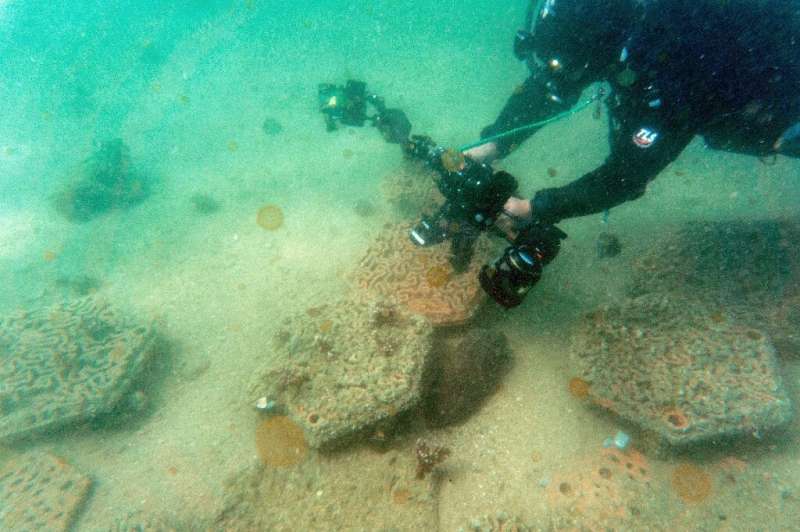In jade waters off Hong Kong’s eastern shoreline, scientists are thrilled to spot a cuttlefish protecting her eggs inside an artificial, 3D-printed clay seabed helping to restore the city’s fragile coral reefs.
[…]
Around 84 species of coral are found in Hong Kong’s waters, scientists say, more diverse than those found in the Caribbean Sea.
Most can be found on remote inlets, far from the sediment-filled Pearl River Delta and its busy shipping channels.
[…]
They have begun using 3D printed tiles that work as an artificial bed for corals to latch onto and thrive, with promising results.
“The first time we put down the tiles, there were a few fish around,” she told AFP on a recent inspection by University of Hong Kong (HKU) researchers.
Now the artificially produced reef laid down last summer is teeming with wildlife, including the cuttlefish, something Yu described as “very, very exciting”.
[…]
Corals are colonies of billions of living polyp invertebrates and are hugely sensitive to temperature changes.
When they get too hot, they lose their vibrant colour and die.
Repopulating a dead or damaged reef requires suitable ground for the remaining coral larvae to latch onto and build a new home—and the printed tiles have so far proven dependable.
“3D printing allows us to customise a tile or a solution for any type of environment and I think that’s the real potential that the technology brings,” David Baker, an associate professor at HKU’s School of Biological Sciences who led development of the technology, told AFP.
Tiles carrying 400 coral fragments have been laid on a 40 square-metre (430 square-foot) section of sea floor in the marine park.
“The corals now on the tiles definitely survive better than the traditional way of transplantation,” said Yu, putting the success rate at around 90 percent.
Some projects around the world have deliberately sunk ships or concrete onto the sea floor to encourage coral growth. And while those methods have had some success, they can change the chemistry of the water.
The tiles used in the Hong Kong project are made with terracotta, minimising the environmental impact.
“Clay is basically soil, so soil you can find everywhere on earth,” said Christian Lange, an associate professor from HKU’s Department of Architecture.
It leaves water chemistry unchanged, Lange added, and if a tile fails to spawn a new colony it will simply erode without leaving a trace.
[…]
Source: Hong Kong’s fragile coral reefs boosted by 3D printing

Robin Edgar
Organisational Structures | Technology and Science | Military, IT and Lifestyle consultancy | Social, Broadcast & Cross Media | Flying aircraft

